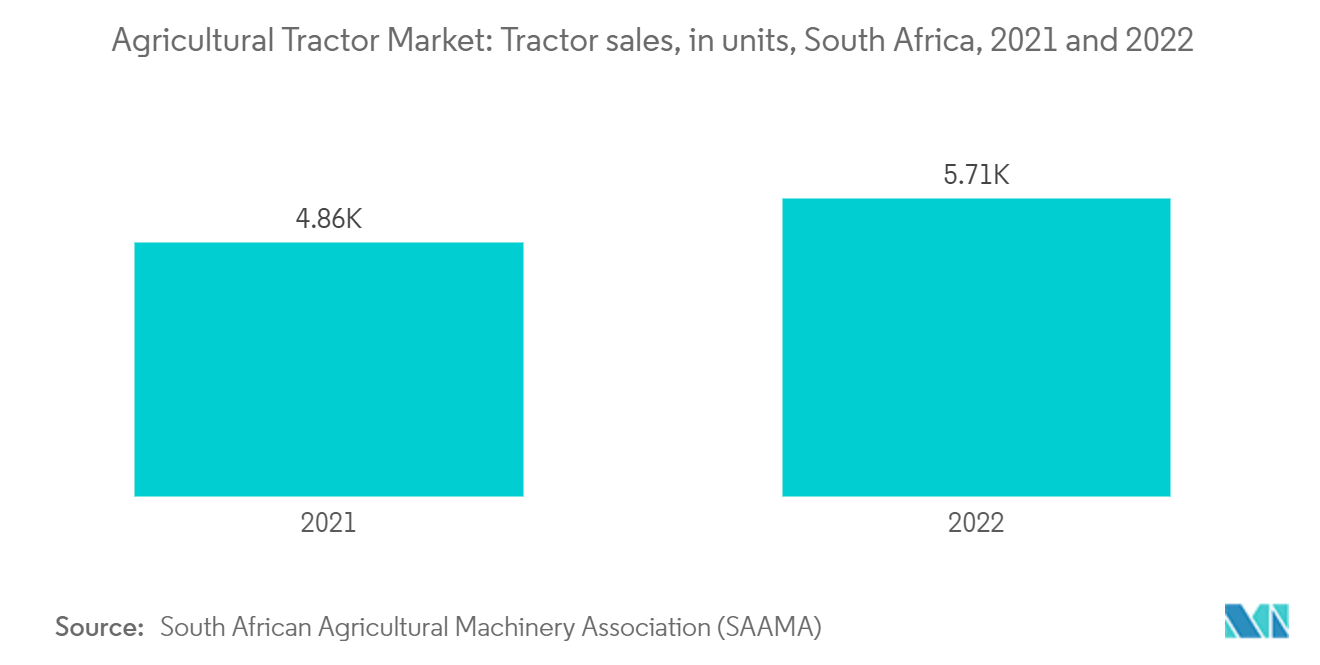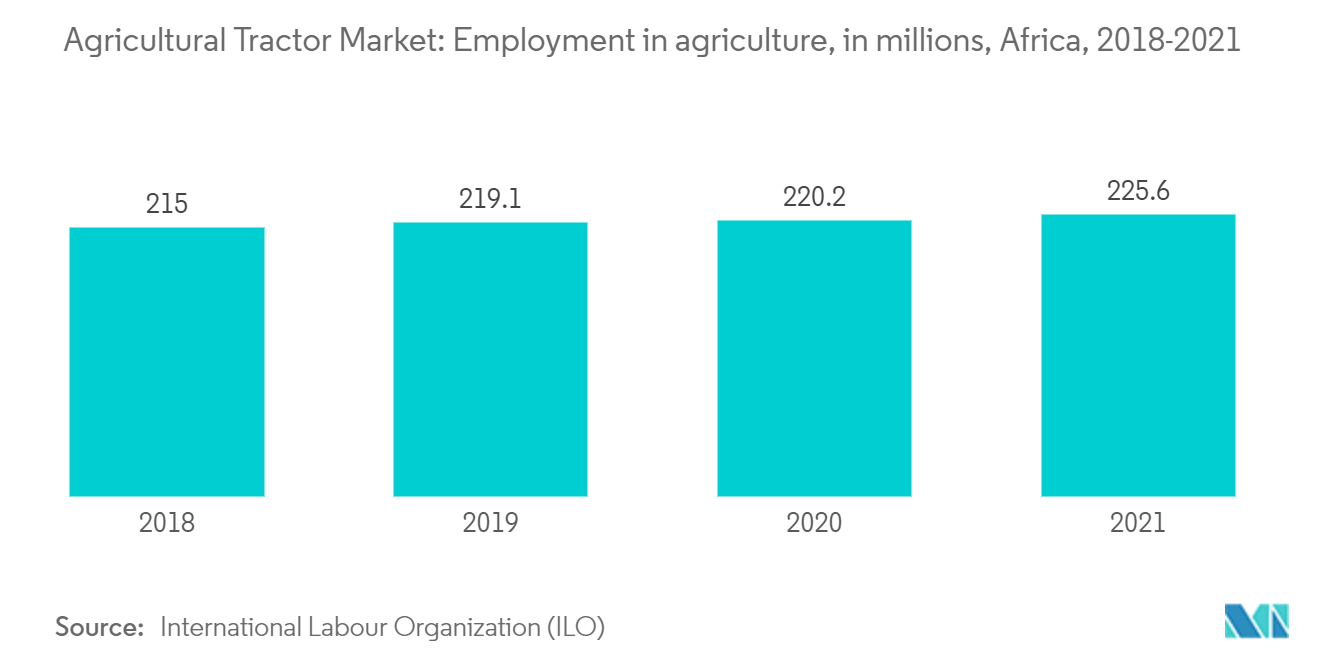Market Trends of Africa Agricultural Tractor Industry
This section covers the major market trends shaping the Africa Agricultural Tractor Market according to our research experts:
Increasing Focus on Sustainable Agricultural Mechanization
- Agriculture plays a crucial role in the economic development of Africa. Despite Africa having the highest area of uncultivated arable land in the world, its productivity needs to catch up to other developing regions. Moreover, crop yields are only reaching 56% of the international average. Thus, there is a dire need to increase crop yields in the coming decades to keep pace with the food demand driven by population growth and rapid urbanization in Africa. Therefore, mechanization through tractors can, directly and indirectly, bridge the yield gap.
- Additionally, this region's tractor sales have witnessed a growing trend in the past few years. For instance, according to the South African Agricultural Machinery Association (SAAMA), in 2022, 5,705 units of tractors were sold, while 4,862 units were sold in August 2021 in South Africa. This showed an increase of 17.3% more than the previous year. Therefore, the increase in sales of tractors shows the trend of an increase in mechanization in Africa.
- According to the Food and Agriculture Organization of the United Nations (FAO), agricultural mechanization in Africa is still in its initial stages. The studies undertaken by FAO also revealed that the level of mechanization in the country is slowly moving from hand-driven technology to power sources.
- However, as stated in the sustainable development goals indicated in agenda 2063, the African Union Commission (AUC) and the Food and Agriculture Organization of the United Nations (FAO) view agricultural mechanization as an immediate indispensable action for attaining the Zero Hunger vision by 2025. Such initiatives toward sustainable agricultural mechanization will likely boost the market for agricultural tractors in the near future.

South Africa Dominates the Market
- South Africa is the largest market among African countries. The South African agricultural economy has witnessed a paradigm shift from food aid to domestic production in the form of the green revolution, which was first started by the World Food Program of the United Nations. South Africa now has major potential for the growth of the agriculture and agriculture machinery market, including tractors.
- In South Africa, there is a need for more farm workers due to increasing urbanization. This developed into a significant issue, driving up labor costs. As a result, farm equipment sales increased, helping the market expand. Additionally, increasing government subsidies for farm mechanization, accommodative financing, growth in the agricultural industry, and increased awareness of farm machine mechanization are driving the tractor market in the coming years.
- The tractor market in South Africa has been reinvigorating from the standstill brought to the market due to extremely dry weather conditions. Major global tractor industry players like Deere & Company and Mahindra & Mahindra, are planning to make South Africa the hub for manufacturing and exports, given the high potential that the farm equipment market holds in South Africa.
- The South African Crop Estimate Committee (SACEC) reported that farmers intend to increase the area plantings for summer grains and oilseeds in the next cropping season, thereby boosting the tractor market during the forecast period.

